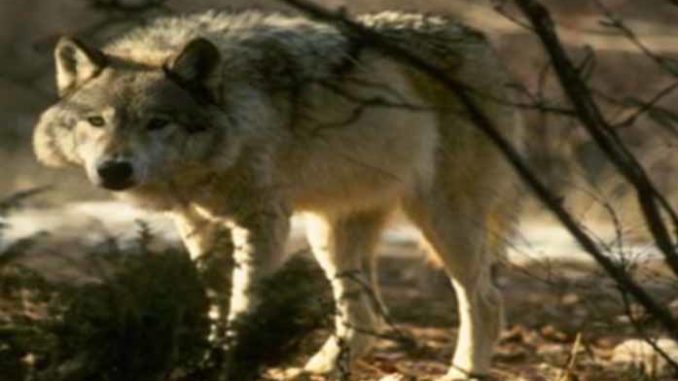
For the fifth consecutive year the population of Mexican wolves in the United States saw growth in 2020. According to the Arizona Department of Game and Fish, the U.S. population of Mexican wolves has climbed 14 percent.
The total number of wolves in the wild stands at a minimum of 186 animals.
The department did not includes details of reported wolf attacks.
From November 2020 through January 2021, the Arizona Department of Game and Fish Interagency Field Team (IFT) conducted ground counts in Arizona and New Mexico that concluded with aerial counts of Mexican wolves in January and February. According to the IFT, the 186 wolves are distributed with 114 in New Mexico and 72 in Arizona.
In 2019, the team documented a minimum of 163 wolves, which was a 24% increase from 2018. This population has nearly doubled in size over the last five years.
Among the 2020 findings:
- There were a minimum of 46 packs (including new pairs) documented at the end of 2020: 29 in New Mexico and 17 in Arizona, plus five single wolves in Arizona. A wolf pack is defined as two or more wolves that maintain an established territory. By comparison, there were a minimum of 42 packs at the end of 2019.
- A minimum of 124 pups were born in 2020, with at least 64 surviving until the end of the year (a 52% survival rate). The average survival of Mexican wolf pups is around 50%.
- The IFT recorded a minimum of 20 breeding pairs (12 in New Mexico, eight in Arizona) with pups in 2020.
- There were 96 collared wolves in the wild at the end of the year, which is slightly more than 50% of the wild population. These radio collars use satellite technology to accurately record wolf locations on a frequent basis. Biologists on the IFT use this information to gain timely information about wolf behavior in the wild and assist with management of the wild population.
- The IFT documented 29 mortalities in the wild population of Mexican wolves in 2020, which is similar to the mortality rate in 2019 given the growing population.
- This year’s survey represents not only an all-time record number of wolves in the wild but also the most ever breeding pairs, wild packs, pups born in the wild, and pups surviving to the end of the year.
In 2020, the IFT placed 20 captive-born pups into seven wild dens (a process called “cross fostering”) to boost the genetic diversity in the wild population. The IFT has since captured and collared seven of these pups and will continue efforts in 2021 to document others that may have survived. With these newly collared pups, the known number of fostered wolves alive is 12.
